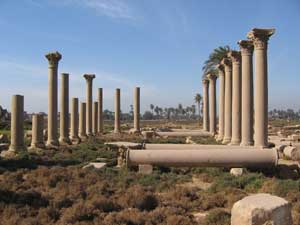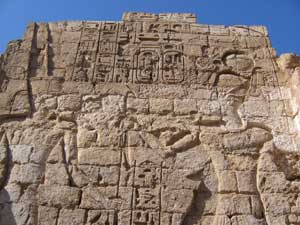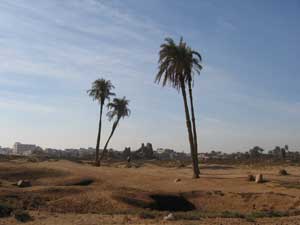ASHMUNEIN
  
|
The modern town of Ashmunein was known in antiquity as Khmunu, literally the 'city of the Eight', a reference to the mythological eight primordial gods who created the world in the local creation story. The site was also dedicated to the god Thoth, a divinity who personified wisdom and knowledge.
A number of temples stood in the central sacred area of the city which was enclosed during the 30th Dynasty by massive mud brick walls. The largest structure was the main temple of Thoth, a very ancient foundation which was replaced and rebuilt many times during history. Amenhotep III made major changes to the temple, adding colossi of the god Thoth in the form of baboons. The last major rebuilding took place during the reign of Nectanebo I during the 30th Dynasty and it received later additions during the reign of Alexander the Great and Philip Arrhidaeus. To the southwest of the main temple of Thoth are the remains of a small limestone temple of Amun which was built during the Ramesside Period (19th Dynasty). The core of this building was excavated by the German archaeologist Gunter Roeder from 1929-1939 and he found 1500 inscribed talatat blocks from dismantled temple of Akhenaten at Amarna, a few kilometres to the southeast across the river. To the south are parts of the fa�ade of a small temple built by Amenemhet II of the 12th Dynasty but they are damaged. Outside the temple enclosure are the remains of a Roman period Christian basilica. Further to the south are two seated colossi of Ramesses II before a destroyed temple, and a small temple dated to the time of the Roman emperor Nero. |